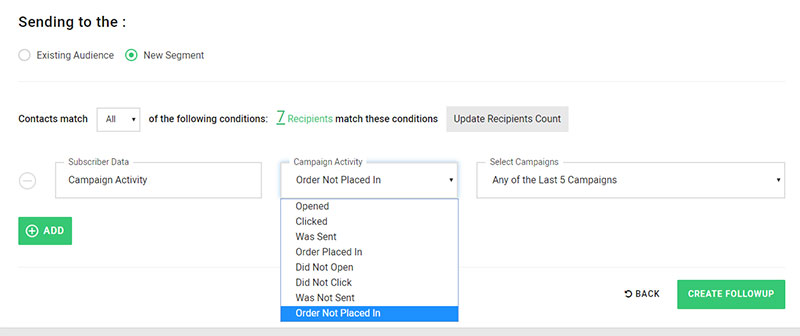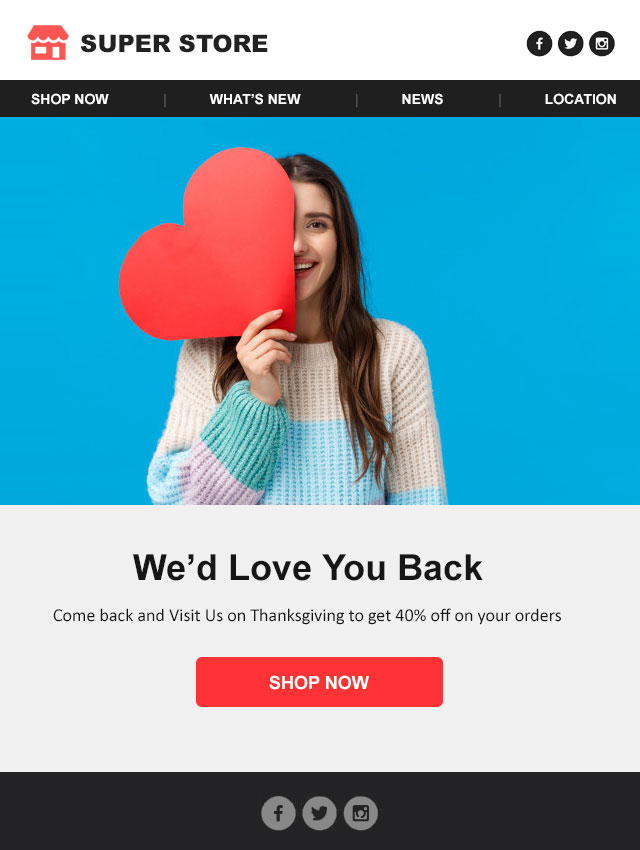Despite brick-and-mortar stores still holding the major share of global retail sales, eCommerce investments are on a steady rise. One driving factor behind this rise is the steady increase in the number of online buyers. According to researchers, the number of digital buyers will surpass 2.05 billion by the end of 2020—which makes 26.28% of the total world population. In fact, by 2023, there will be at least 300 Million online shoppers in the US alone.
Observing this surging trend, eCommerce brands are trying every trick in the book to improve their reach and present themselves before their prospective customers in the best way possible. Though there are several novel marketing mediums that retailers can leverage—like social media, paid advertising, etc—email marketing continues to dominate the list because of its cost-effectiveness and reputation as a more personalized channel of communication. Additionally, 102.6 trillion emails are being sent every year, which is expected to reach 126.7 trillion by the year 2023.
Before getting your hopes high, let me add this statement to my previous claim. “Sending emails is as easy as ABC, however, to engage and encourage recipients to take specific actions is a whole different ball game.” Even world-class marketers like Tommy Walker—the editor-in-chief of Shopify Plus—spend enormous amounts of time gathering and creating the most trustworthy and proven email marketing techniques in segmentation and A/B testing.
Over these years, I’ve worked alongside numerous eCommerce brands and successfully eased their digital transformation journey. This blog summarizes some of the valuable marketing lessons that I learned back then—which are relevant now and for as long as email exists.
Lay the Groundwork
Embrace the power of simplicity, and start simple. Firstly, aggregate your subscribers based on 4 pillars of segmentation and start building from there.
Geographic
Any marketer who wants to promote a product/service should know where their customers live. By understanding this basic information, markers will be able to plan the best time and channels to reach out to them.
Demographics
This involves knowing your customers’ age, gender, marital status, level of education, and income. Demographic data is imperative because it contributes useful insight into the user’s propensity for shopping.
Psychographic
Getting to know the customers’ values, attitudes, and beliefs is the best way to predict their personality and lifestyle. In this way, brands can recommend the most relevant products/services to their prospects.
Behavioral
In addition to comprehending a customer’s real-world personality, it is important to understand his/her online behavior—how loyal a customer is to the brand, what kind of products/services she preferred to buy in the past, etc.
Once you have these broad categories sorted, continue refining them into smaller and smaller segments, known as micro-segments.
An Introduction to Micro-segmentation
Segmentation refers to the practice of dividing your list of subscribers into groups relevant to your business. Aggregating your customers into different categories is proof of how well you understand your customers. This helps you address the needs of your audience better and deliver the solutions they seek. Advanced customer segmentation uses cross-channel behavioral insights and data from internal and external sources to find, understand, and define audience micro-segments.
Wondering how different is micro-segmentation from the traditional segmentation approach? I have already explained the classic segmentation (refer to the section above). When basic grouping covers only the four distinct lines of data (four pillars of segmentation), micro-segmentation goes into the granular level. For instance, imagine you sell shoes online. With micro-segmentation, you might find data like “Boys aged 20-30, living in New Jersey, who have abandoned their cart in the last 60 days, who have previously purchased Nike shoes—are more likely to convert if they receive a series of emails.
Having such control over their data, marketers can create tailored messages that will engage the customers and ultimately convert them to loyal prospects.
Creating Micro-segments and Hyper-personalized Experiences
Now that we’ve covered the basics, let’s discuss building hyper-personalized customer experiences by creating micro-segments.
Studies show that hyper-personalized e-commerce experiences result in higher revenue, lesser product returns, and improved brand reputation. What’s more, an email marketing tool is much more effective if it has data beyond the recipients’ names, and can deliver 6x the transaction rates.
Let me put this into perspective: Starbucks—the biggest coffee company in the world, adopted a real-time personalization engine that produces individualized offers for its customers based on previous behavior and preferences. The data gathered from this AI-powered system enabled them to understand the needs and habits of their users at a granular level— allowing them to send out messages relevant to diverse customer segments.
This is what they have witnessed from their hyper-personalized email campaigns,
- 300% increase in marketing effectiveness
- 200% increase in email redemptions
- 300% increase in incremental spends
- 24% of total transactions now happens through their app
To help you get started with micro-segmentation, I’ve put together some ideas that might support your email segmentation strategies.
Segment Based on Purchase History
One of the common misconceptions is that segmentation based on past purchase and purchase history is the same. This isn’t right. Past purchase information can be used to send relevant cross-sells and upsells. For instance, if someone bought a laptop from your store, you can send cross-sells, upsells, and upgrades a week or two after the transaction.
Purchase history is different; for it is comprehensive, and covers the entire list of products that a customer purchased during his/her relationship with the brand. There are several ways in which retailers can use these data:
- Encourage repurchasing to fill the gap between purchases
- To predict future purchases
- To set up a loyalty program
Here’s how an email based on purchase history should look like.
Segment Based on Purchase Frequency
Smart retailers aggregate their customers based on the frequency of purchase. This helps to find frequent buyers and reward them with special discounts and other perks. There is so much you can do with purchase frequency segmentation; a good place to start is by finding your store’s purchase frequency.
By knowing the buying frequency, you can differentiate first-time buyers from frequent buyers and set up separate campaigns relevant to each group.
Segment Based on Purchase Preferences
First things first, the latest purchase and history of purchases are not the best way to find a customer’s buying preferences. The best means to identify your customer’s purchase interests is to ask them.
This is how Marketo asks its subscribers about their interests.
Another approach is to send a survey email to get information regarding your customers’ interests.
Segment Based on Change in Buying Habits
Shopping patterns are in a constant state of Evolution. Novel advancements in technology have opened up new ways to research, compare, and buy products. Understanding how your customers’ behavior changes with time and technology is how successful retailers bring innovation into their retail marketing strategies.
Based on their buying pattern, you can move your customers to appropriate lists, and start sending emails. For example, some of your customers might lose interest in the long run while others will start buying more. By grouping each customer under relevant segments, you can frame adequate strategies to tackle their interests.
Segment Based on Cart Abandonment
An abandoned cart is the stark reality no retailer can escape from. In fact, there is no such thing as 0% cart abandonment. However, modern-day retailers see it as a blessing in disguise and use email remarketing to improve their email ROI.
The notion behind an abandoned cart email is simple: It reminds the shoppers of items they left in the cart and brings them back to the cart to resume the purchase process. According to 99firms research, 28.3% of all eCommerce revenue comes from successful abandoned cart emails.
Anyway, one of the major factors that directly influence the effectiveness of cart abandonment triggers is the segmentation part. If the right message reaches the right recipient, half the job is done. Further, with the right personalization, you can bring back the lost shopper and recover your almost-lost revenue.
An example of an abandoned cart email will look like this,
The best practice is sending a series of emails instead of a single reminder email. A series of cart recovery emails can generate up to 131% more orders than a single cart recovery email.
Looking to Reduce Cart Abandonment Rate? Get 40+ high-converting Abandoned Cart Email Templates for Free.
Conclusion
Reaching out via email can bring strong results—or not. Your success in email marketing hinges on your ability to deliver value to your customers’ lives and not just sales or spam to their inboxes. Segmenting your email list is an excellent way to build personal connections with your prospects. Leaning into the data, marketers can excel at segmentation, and sort their list based on the interest of their customer base and the types of content they have historically interacted with.
However, list segmentation is not a one-off task. It involves adding, updating, and cleaning the list based on specific criteria. Also, discovering new variables that trigger sales and creating new segments is vital to deliver the right message, to the right person, at the right time. Proper segmentation helps you understand your customers better, thus enabling you to communicate and inspire your target audience to take action.
Want to learn more about email marketing? Talk to our experts today.



















